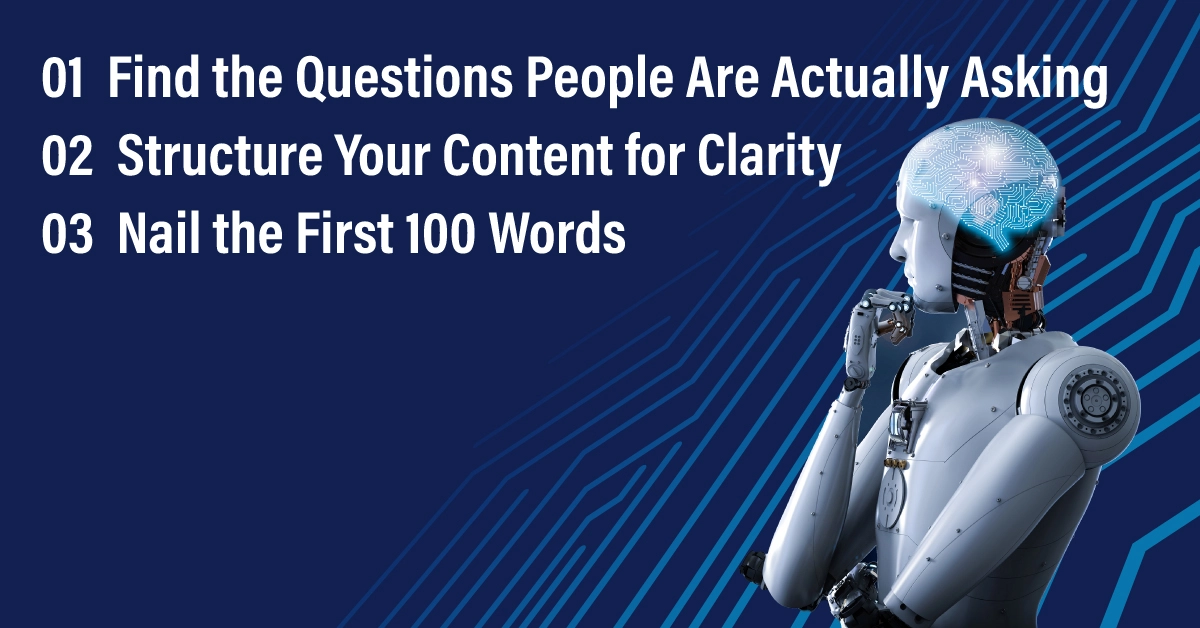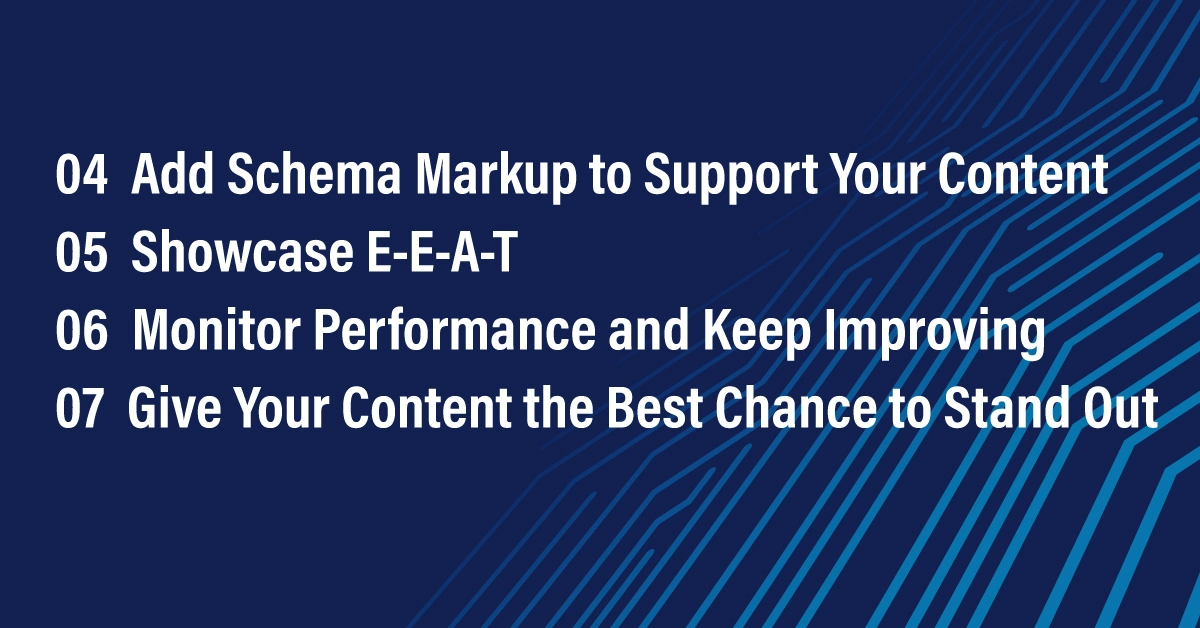
Google is constantly evolving the way it presents information to users. Traditional blue links are no longer the only way to gain visibility - featured snippets and AI-generated overviews are now taking up prime space at the top of search results. These formats offer users direct answers to their questions and often become the go-to result for quick information.
If your goal is to increase organic visibility, drive qualified traffic, and position your brand as a trusted source, then targeting these formats should be part of your SEO strategy.
Find the Questions People Are Actually Asking
The first step is understanding your audience's intent. Look for common, question-based queries using tools like:
- Google’s ‘People Also Ask’ box
- Search Console performance reports
Identify recurring themes and build individual content blocks to directly answer each question. These can be built into existing content or created as standalone FAQ or how-to pages.
Structure Your Content for Clarity
Search engines prefer content that is easy to understand. Use:
- Descriptive H2 and H3 subheadings
- Bullet points and numbered lists
- Short, focused paragraphs
Formats that perform especially well in featured snippets include:
- Step-by-step instructions (for how-to queries)
- Comparison tables
- Concise definitions
- Clearly formatted FAQs
When content is clearly structured, it’s easier for AI systems and Google’s algorithms to identify the answer and use it in a snippet or summary.

Nail the First 100 Words
The introduction of your content matters more than ever. Use the opening paragraph to:
- Summarise the topic
- Include the core keyword or question
- Offer a direct answer or definition
This section is often pulled into AI overviews or position-zero snippets, especially for instructional or informational content. Make it sharp, relevant, and helpful.
Add Schema Markup to Support Your Content
Schema markup gives search engines extra context about your content. By adding structured data, you make it easier for Google to extract and display your content in enhanced formats.
Recommended schema types include:
- FAQ Page: for question-and-answer content
- Video: for tutorials
- Article: for blogs and news-style posts
Correctly implemented, schema can significantly boost your chances of appearing in AI-generated answers and rich results.
Showcase E-E-A-T: Experience, Expertise, Authoritativeness, Trustworthiness
Google’s quality guidelines focus on E-E-A-T. This is particularly important for content that falls under Your Money or Your Life (YMYL) categories such as health, finance, or legal.
To build credibility:
- Use named authors with bios and credentials
- Cite reputable sources
- Link to official guidance or standards
- Include testimonials or case studies if applicable
The goal is to show both users and search engines that your content is credible and written by people with genuine knowledge.

Monitor Performance and Keep Improving
Once your content is live, use Google Search Console to monitor which pages appear in featured snippets or AI-generated summaries.
Track changes over time. If performance drops, update your content. Search intent and ranking formats can shift quickly, especially as AI overviews evolve.
Give Your Content the Best Chance to Stand Out
By answering questions clearly, structuring content well, and signalling trust and expertise, you can position your content for the top of the search results - whether through featured snippets or AI overviews.
These positions drive higher click-through rates, increase authority, and reduce dependency on paid ads.
Want support optimising your site for AI-led search?
Get in touch with our team to find out how we can improve your visibility and help your business stand out at the top of Google.